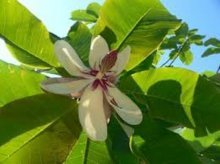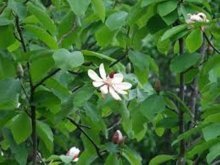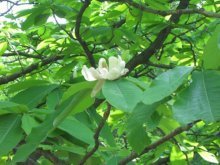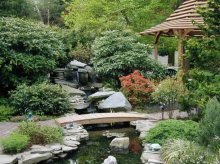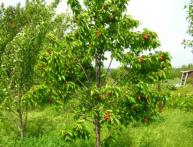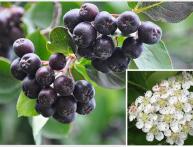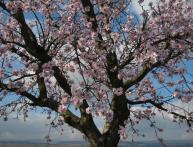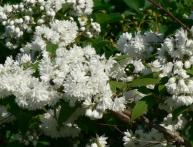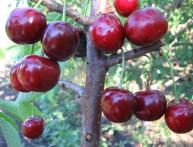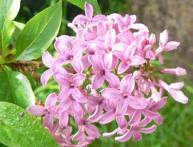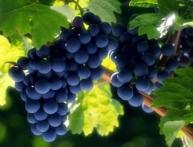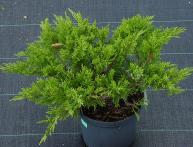Magnolia obovate, description, features of planting and care
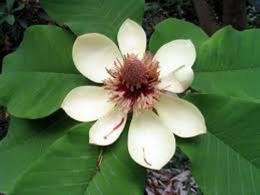
A bright and original tree looks impressive at any time of the year, both when planted alone and in alleys and group compositions. And in order for the plant to decorate alleys and parks with its large flowers and bright fruits longer, you need to know the basic rules for caring for the tree.
Content:
- Description of magnolia obovate
- Features of planting magnolia obovate
- Plant care rules
- Magnolia in landscape design
Description of magnolia obovate
Magnolia ovate belongs to the genus Magnolia and the family Magnoliaceae and is a flowering plant. The homeland of this beauty is Japan. Under natural conditions it grows in some Japanese regions at an altitude of up to 1800 m above sea level, and the northernmost region where this tree can be found is the Kuril Islands.
The only species that occurs wild in Russia and Ukraine. In our country, obovate magnolia listed in The Red Book. The plant prefers mountain broad-leaved and coniferous forests, grows singly or in small plantings, its neighbors are most often birch, captivity, and hornbeam.
It is considered a deciduous tree, the height of which reaches 30-35 m in height and the trunk diameter is about 65 cm. The crown grows up to 15 m in width. The bark of the trunk is smooth, gray in color, and on young shoots it is brown with a bluish coating. The buds are large, green, bare, and are located at the ends of the shoots.
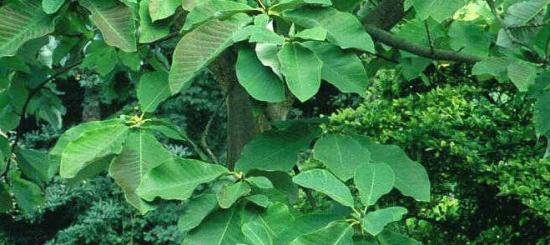
The leaves are large, obovate, leathery, up to 30 - 40 cm in length. Wide at the base and pointed at the end, they are green at the base and bluish towards the ends. Young foliage is pubescent, but becomes smooth with age. Leaves are collected in 9-10 pieces.
Flowering occurs in May and June, even in our latitudes, immediately after the first leaves appear, for quite a long time, up to 4 weeks. The flowers are white or milky, cup-shaped, up to 18 cm in diameter and have a wonderful vanilla-lemon aroma.
Magnolia obovate looks very decorative both in the photo and in the natural environment. In the middle zone, only a few types of flowers are able to grow and bear fruit: kobus, star and some hybrids.
The fruits are red multifoliates, grow up to 20 cm and hang down, containing black oblong fruits. seeds, covered with a bright purple shell, fruiting occurs in September - October.
Features of planting magnolia obovate
Please check carefully before planting seedling, it should be healthy in appearance, strong and with a closed root system.

The choice of location should also be approached responsibly. The ideal option is sunny areas, protected from northern and western winds and drafts. The tree does not tolerate heavily limed soil, and if the site has just such soil, it is necessary to add a sufficient amount of acidic soil. peat to lower the pH.
A young plant can be planted at different times.
in autumn
By the autumn season, the plant gains strength and stops growing for “hibernation”. Transplantation is carried out in October, when the weather becomes moderately cool, and before the onset of severe frosts.
in spring
During this period, the plant is sensitive to the slightest frosts, Therefore, you should be careful when choosing the spring planting method. Most often, seedlings are planted in late April or early May.
After choosing a site, you need to prepare planting holes, which should be 2.5 - 3 times larger than the root system:
- Having dug out the required amount of soil, it is mixed with rotted compost;
- heavy wet soil is lightened by adding a little coarse river sand;
- after preparing the hole, a young tree is placed in it, without deepening the root collar;
- soil is poured into the remaining space and a small hole is formed near the trunk;
- the soil is slightly compacted and watered thoroughly;
- After the water is completely absorbed, you need mulch tree trunk circle with sawdust, pine needles, sand.
Plant care rules
Although it is a rather low-maintenance plant. The basic steps for growing a beautiful, healthy tree come down to following some rules:
Watering and moisture
During the first years of its growth, the tree requires soil moisture. It is necessary to water frequently and abundantly, and during the summer heat the tree trunk circle should not be allowed to dry out. Moisture conservation is facilitated not only by timely watering, but also mulching. Mulch reduces evaporation, warms the root system during cold months, and provides the roots with additional nutrition.
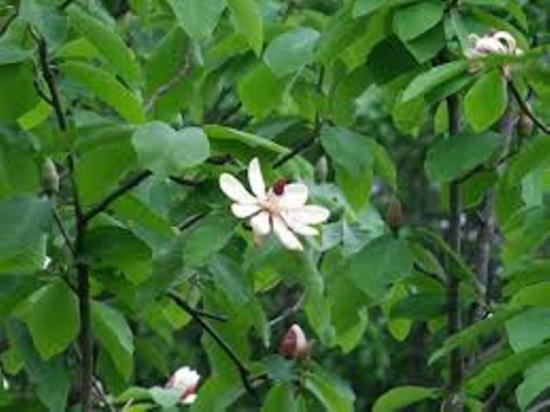
Top dressing
It is advisable to postpone the application of fertilizers until the tree is 2 years old. And 3-year-old seedlings are very responsive to fertilizing. This is done from spring until the end of summer, and nitrogen-containing fertilizers are used until the end of July, as they contribute to the freezing of the plant.
Fertilizers are used both purchased and independently prepared:
- 20 g ammonia saltpeter, 15 grams of urea diluted in 10 liters of water. Each tree requires at least 40 liters of such fertilizer;
- you can buy ready-made mineral complexes created specifically for magnolias, for example Agregol “Magnolia” and prepare a solution for watering according to the instructions;
Shelter
Although tree varieties grown in the middle zone are winter-hardy, they still require shelter during the cold season. Particularly sensitive to the slightest frost young trees.
The shelter is easy to make: just carefully wrap the trunks with 2 layers of burlap. The tree trunk circle also needs to be insulated. This is done after the ground has slightly frozen - this technique will help avoid attacks by mice in the winter.
Trimming
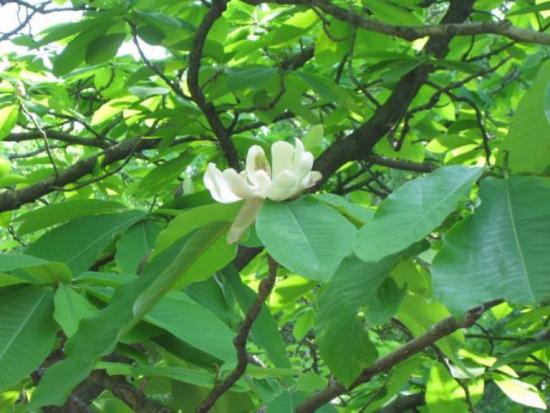
Magnolia does not require annual formative pruning; it will only be enough to trim dry, damaged and intersecting branches in the crown, as well as wilted flowers in time (after flowering has ended). The upper parts of branches damaged by frost are also cut off.
The cut is made to the healthy part of the branch and lubricated with garden varnish. In the spring pruning prohibited.
Disease and pest control
The tree is resistant to diseases and pests, but even it is sometimes disturbed by moles and rodents. They pull out the roots, gnaw them and the root collar. For medicinal purposes, the damaged trunk is treated with a 1% solution of foundationazole.
And among the diseases most often found:
- powdery mildew;
- scab;
- rot;
- gray mold;
- chlorosis.
Due to chlorosis, yellow spots appear on the crown from the overall green color of the entire crown. Chlorosis signals strong liming of the soil, which leads to improper and weak growth of the root system and even death of the tree.Lime can be removed by adding acid to the soil. peat or coniferous soil, or buy a special product in the store.
Even oversaturation of the soil with various nutrients leads to a slowdown in plant growth. The presence of excess substances in the soil can be determined at the end of July. At this time, when there is oversaturation on old leaves, the edges of the leaf plates begin to dry out.
Of the insect pests that most often settle on a tree:
- peach aphid lives in columns and feeds on sap from leaves and stems;
- Mealybugs are sucking insects visible to the naked eye. They form cotton-like secretions and slow down the development of the plant. They do not like garlic and tobacco solutions;
- thrips are elongated small insects that leave small dots on the foliage - punctures and brown spots on the back of the plates. They reproduce quickly and move actively. It is possible to get rid of it with the help of numerous acaricides.
- spider mite, which appears in the hottest summer heat. The pest feeds on the sap from the leaves and stems of the plant, completely sucking it out, and as a result the foliage begins to wither, dry out and fall off. In addition, ticks are carriers of various viral diseases that cannot be treated.
It is easy to fight the pest; in this case, even numerous folk remedies help.
Magnolia in landscape design
This incredibly ornamental plant can be used in completely different design compositions.
On walking alleys in parks and squares there are row plantings.
- Creating bright accents in a single planting.
- Decoration of the territory with contrasting group plantings. The neighbors of such a composition can be blue Siberian spruce, junipers, thuja, viburnum.
- To create gardens in Japanese style. Varieties with pink flowers, very reminiscent of cherry blossoms, are suitable for this purpose.
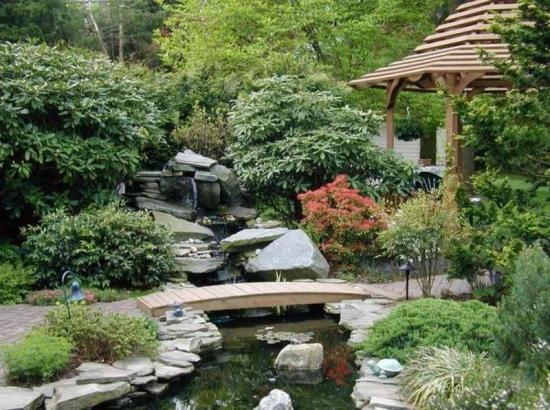
Beautiful magnolia will not leave anyone indifferent: a bright and delicate, original and stylish magnolia will perfectly complement and decorate any site, park or garden. It will add tenderness, romance and nobility.
Find out more about magnolia obovate, the rules for planting and caring for this tree, and the features of growing in the middle zone by watching the video:

